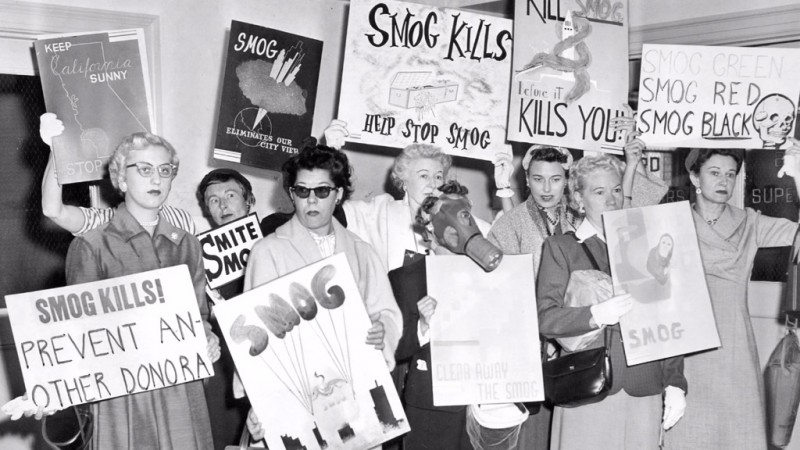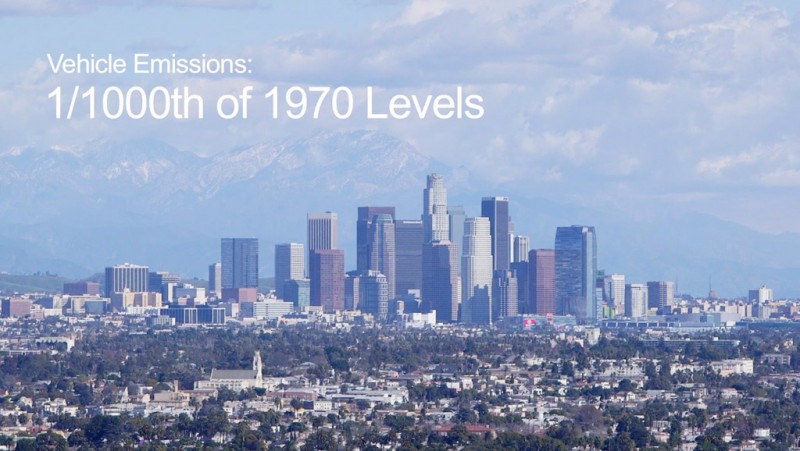In 1970’s America, pollution levels in some of the largest cities was at a critical point. People were being told to stay indoors when smog was at it’s worst. A group of Honda engineers pioneered pollution reduction with efforts to build ever more economical and efficient engines, leading to lower pollutants being emitted at the exhaust pipe. Honda’s new short film, Never Ending Race, shows the story of how Honda took Formula One inspired methodology and took it into their road cars to reduce pollution.
Ultimately, the dramatic effect of decades of work has been more blue skies and far less smog and pollution. The state of California implemented more stringent exhaust emissions standards which meant the industry had to catch up in order to sell vehicles there at all, and today smog-forming vehicle emissions are 1/1000th what they were in 1970, according to Honda.
The U.S. Clean Air Act was largely accepted due to places such as Los Angeles where 100 stage 1 smog alerts were had in as little as a year. Honda’s response was to create the CVCC engine which met the new regulations without need of, at the time, expensive catalytic converters. The renowned engine first saw service in the Honda Civic of 1975.
The film begins with the former heads of California’s Air Resources Board and the U.S. EPA’s Assessment Standards division offering first-hand accounts of what it was like to live in the Los Angeles area during some of the worst years for air pollution. Both leaders, who played central roles in the implementation of tighter emission standards for California and the nation, offer praise for Honda’s efforts to assist the regulatory process and develop better emissions controls.
Honda’s most recent achievement came in autumn 2013, when California’s Air Resources Board announced that the 2014 Honda Accord Plug-In Hybrid was the first petrol-powered car to meet its SULEV 20 standard, the most stringent in America and one-third cleaner (in terms of smog-forming pollution) than the state’s previous most stringent standard.
The result of this technological revolution is a dramatic improvement in urban air quality in the U.S. Los Angeles, for example, has not experienced a stage 1 smog alert in eight years, and only one in the last 14 years, despite a steady increase in the number of cars per capita in the region and an increase in the annual miles driven per car. While Los Angeles and other cities still experience unhealthy air – primarily due to sources other than light duty vehicles – air quality is greatly improved from thirty years ago.
Honda plans to introduce an all-new hydrogen-powered fuel cell car in 2015 and unveiled a concept version of the vehicle, the Honda FCEV Concept, at the 2013 Los Angeles Auto Show.
Video & Source; Honda


